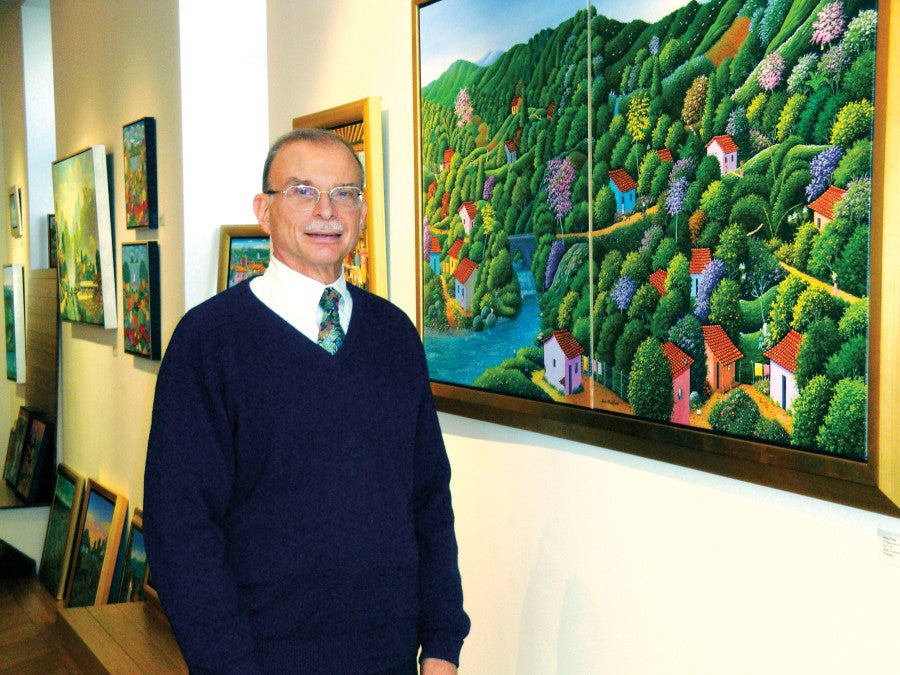Dan Chill ’70: Practicing the art of bringing back a forgotten genre
When you’re standing in the middle of GINA Gallery of International Naïve Art, you feel the way you would in a flower garden on a perfect day.
That’s just the ambience Dan Chill ’70 hoped to create when he founded the Tel Aviv gallery in 2003.
Chill defines naïve art as a genre made up of “simple, idealized scenes that have an enchanting innocence and joyous colors.” The artists—most often self-taught—paint the world “as it could be or should be.”
His mission is to expose more and more people to the paintings that, he said, first “grabbed my heart” 28 years ago during a business trip in Tegucigalpa, Honduras.
On the road many months a year as general counsel for Israel Aircraft Industries and the Eisenberg Group, and then later with a company that introduced the first digital offset color printing press, Chill carved out time to buy works by local naïve artists. He soon saw that the paintings he brought home deeply affected other people as well. “When people visited our home, they spoke about what was on our walls instead of the weather and politics,” Chill said. By establishing the gallery, the first to focus on naïve art from around the world, he sought to give the artwork the recognition he believes it merits.

Among the artists featured at the gallery is Alonso Flores of El Salvador, whose work depicts scenes from village life as he remembers it: women carrying produce from the market and children swimming in a stream. Although many of the artists represented are from countries where there is great political upheaval, violence or poverty—and Flores is no exception—these forces are never visible in the artwork. Chill insists this is how these artists want to “see and feel” their world. He is happy to report that, since Flores’ work first appeared in the gallery, it is now in demand by collectors around the world.
GINA now features the work of 200 artists from more than 25 countries, including Canada, Brazil, Spain and Russia. Prior to his visit to a country, Chill prepares and researches as carefully as he would for a legal case—writing a “mini doctorate” about the local art and artists and the best contacts. Then, with the help of drivers and translators, he visits the artists’ homes to “find out what’s behind each piece,” taking careful notes on his yellow legal pad, a habit he’s held on to since law school.
In April, he traveled to Nicaragua, Honduras, El Salvador, Guatemala and Panama, and then home to Tel Aviv, visiting more than 20 artists and acquiring approximately 40 paintings, and then returned to Cambridge just in time for his 40th law school reunion. (In addition to his J.D., he holds an M.P.A. from the John F. Kennedy School of Government.)
Chill says business has been thriving in the Tel Aviv gallery, and his hope is to eventually include the work of artists from China, Australia and possibly Africa on its walls. His dream (once the gallery has been discovered by art collectors worldwide) is to create a “museum of the highest caliber” highlighting naïve art from all over the world.
“I’m really proud of taking up the challenge of bringing back into the art world a genre that is one of the oldest in history but hasn’t been given the attention it deserves,” he said.
See more of the art on display at GINA.
